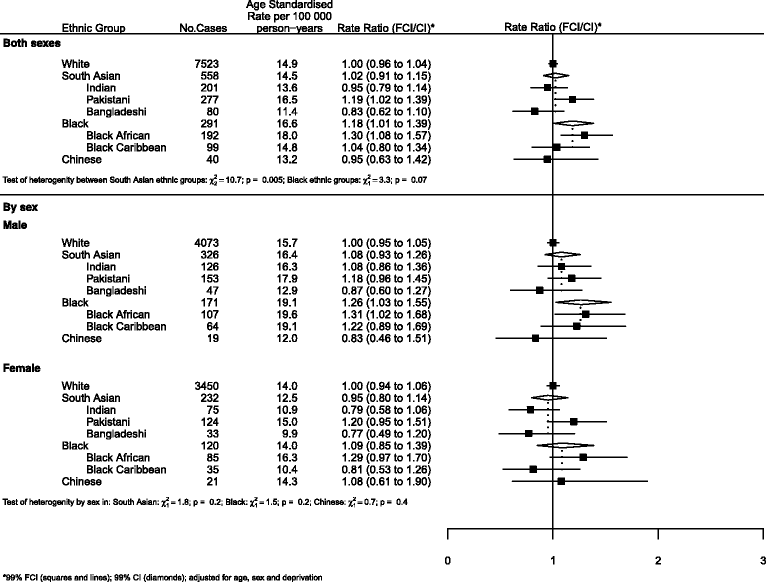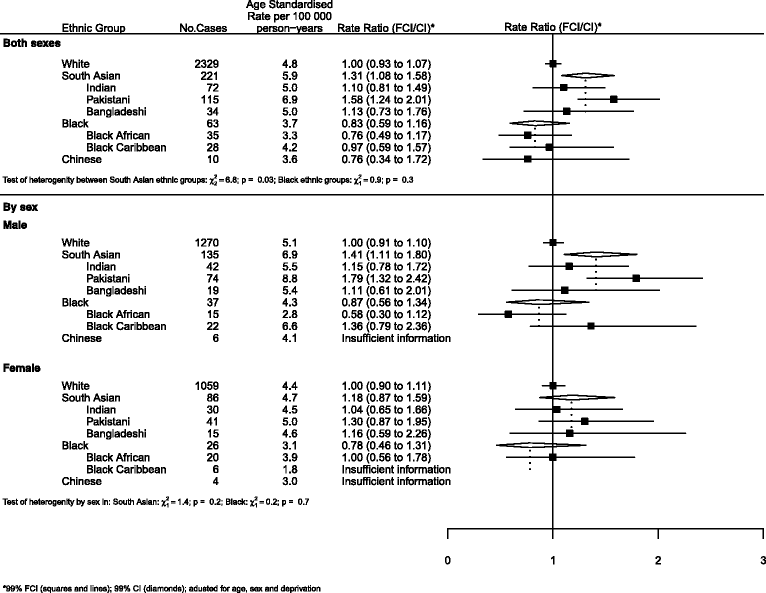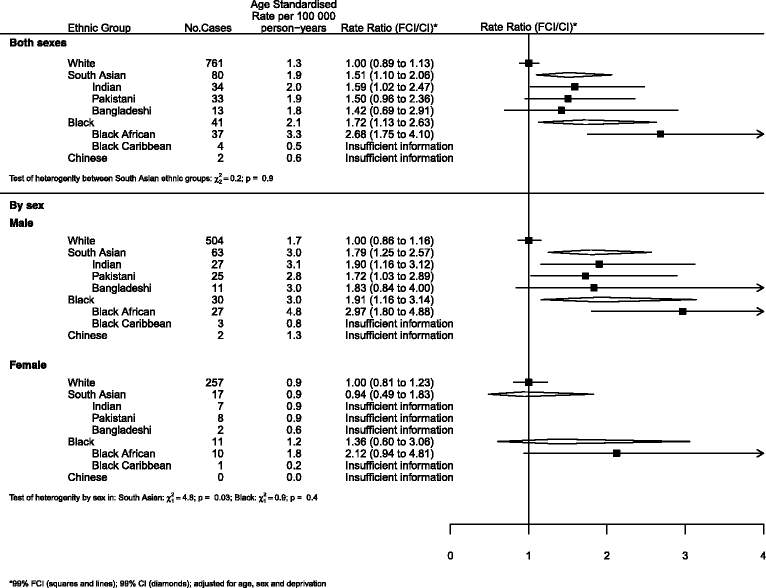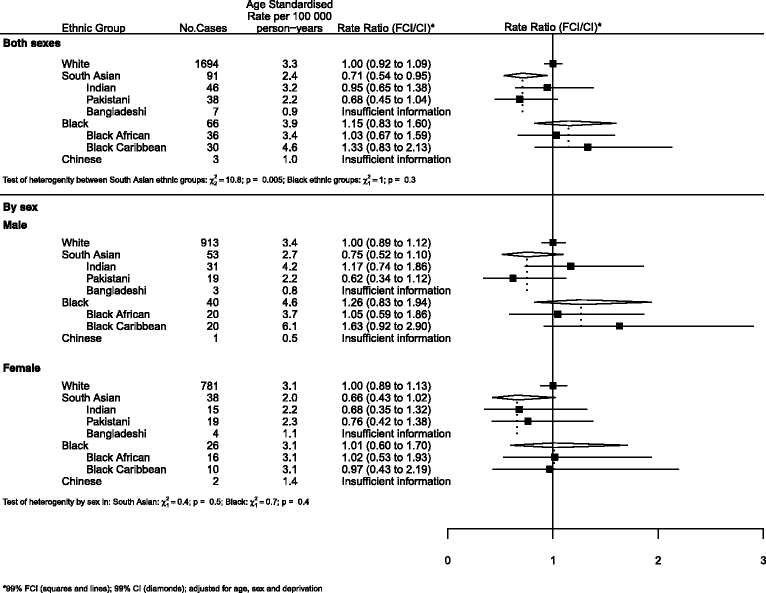Childhood cancer incidence by ethnic group in England, 2001-2007: a descriptive epidemiological study
- PMID: 28841853
- PMCID: PMC5574126
- DOI: 10.1186/s12885-017-3551-7
Childhood cancer incidence by ethnic group in England, 2001-2007: a descriptive epidemiological study
Abstract
Background: After the first year of life, cancers are the commonest cause of death in children. Incidence rates vary between ethnic groups, and recent advances in data linkage allow for a more accurate estimation of these variations. Identifying such differences may help identify potential risk or protective factors for certain childhood cancers. This study thus aims to ascertain whether such differences do indeed exist using nationwide data across seven years, as have previously been described in adult cancers.
Methods: We obtained data for all cancer registrations for children (aged 0-14) in England from January 2001 to December 2007. Ethnicity (self-assigned) was established through record linkage to the Hospital Episodes Statistics database or cancer registry data. Cancers were classified morphologically according to the International Classification of Childhood Cancer into four groups - leukaemias; lymphomas; central nervous system; and other solid tumours. Age standardised incidence rates were estimated for each ethnic group, as well as incidence rate ratios comparing each individual ethnic group (Indian, Pakistani, Bangladeshi, Black African, Black Carribean, Chinese) to Whites, adjusting for sex, age and deprivation.
Results: The majority of children in the study are UK born. Black children (RR = 1.18, 99% CI: 1.01-1.39), and amongst South Asians, Pakistani children (RR = 1.19, 99% CI: 1.02-1.39) appear to have an increased risk of all cancers. There is an increased risk of leukaemia in South Asians (RR = 1.31, 99% CI: 1.08-1.58), and of lymphoma in Black (RR = 1.72, 99% CI: 1.13-2.63) and South Asian children (RR = 1.51, 99% CI: 1.10-2.06). South Asians appear to have a decreased risk of CNS cancers (RR = 0.71, 99% CI: 0.54-0.95).
Conclusions: In the tradition of past migrant studies, such descriptive studies within ethnic minority groups permit a better understanding of disease incidence within the population, but also allow for the generation of hypotheses to begin to understand why such differences might exist. Though a major cause of mortality in this age group, childhood cancer remains a relatively rare disease; however, the methods used here have permitted the first nationwide estimation of childhood cancer by individual ethnic group.
Keywords: Childhood cancer incidence; England; Ethnic minorities.
Conflict of interest statement
Ethics approval and consent to participate
This study was approved by the Oxford Research Ethics Committee (this was a requirement for the data to be released by NCIN). Consent was not obtained because the data were analysed anonymously (de-identified and aggregated).
Consent for publication
Not applicable.
Competing interests
The authors declare that they have no competing interests
Publisher’s Note
Springer Nature remains neutral with regard to jurisdictional claims in published maps and institutional affiliations.
Figures
References
-
- National Cancer Intelligence Network and Cancer Research UK . Cancer Incidence and Survival by Major Ethnic Group, England 2002–2006. 2009.
-
- Ali R, Barnes I, Cairns BJ, Finlayson AE, Bhala N, Mallath M, Beral V. Incidence of gastrointestinal cancers by ethnic group in England, 2001–2007. Gut. 2013;62(12):1692-703. - PubMed
-
- Shirley MH, Sayeed S, Barnes I, Finlayson A, Ali R. Incidence of haematological malignancies by ethnic group in England, 2001–7. British journal of haematology. 2013;163(4):465-77. - PubMed
MeSH terms
LinkOut - more resources
Full Text Sources
Other Literature Sources
Miscellaneous






